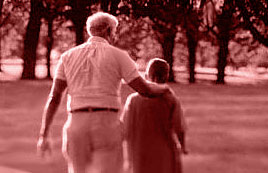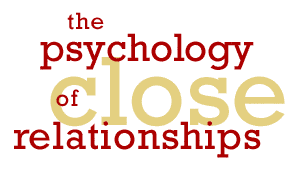





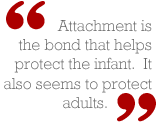
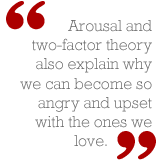
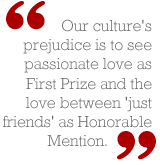

|
For each item you marked "True," you received one point; your score can
thus be between 0 and 10. The higher your score, the more you believe in what psychologists call "romanticism."
The Romanticism Scale is based on the work of several psychologists who define romanticism as an unrealistic, idealistic attitude about love. Four beliefs are central
to romanticism:
- Love conquers all. (items 1, 2, 9)
- Each person has only one love in the world. (items 3, 5, 10)
- The one you love will meet your highest ideals. (items 4, 8)
- Love can strike at first sight. (item 6).
Romantics are also unrealistic about love, believing that extreme emotions and insecurity, such as jealousy, are necessary for love (item 7).
Early research on romanticism suggested that men were more romantic/unrealistic than woman but this gender difference has not
shown up on more recent studies. Other research suggests that men and women can be equally romantic but may express it differently: Men may
have more unrealistic ideas (such as believing that love will overcome difficulties) while women may have more romantic
sensations, such as feeling like they're walking on air or living in a dream, as Hannah described in one of the opening vignettes.
Romanticism has both benefits and risks. It is a theme in many patterns of love, sometimes feeding a dangerously unrealistic set of
expectations but perhaps also providing the arousal and motivation necessary to make a commitment to someone.
Using survey research, interviews, case studies and some very creative experiments, psychologists have developed several
instructive theories of love -- what it is and how it shapes our behavior. They are not mutually exclusive and each tells us a little
bit more about what we mean when we talk about love.
We'll examine four types of theories here: love as connection; love as emotion; love as an attitude; and love as a synthesis.
Love as Connection
The connection a baby feels for his or her caregivers as they provide comfort, security, warmth and food forms the foundation for
love relationships in later life, according to some views of love. Infant attachment patterns set in motion expectations about
the safety and desirability of connection with another that can last throughout life.
Attachment is the process by which an infant's emotional and social responses are focused on one person, the caregiver. This
is usually the mother but it can be any caregiver, regardless of gender, a biological or adoptive parent. A securely attached infant
and toddler cries out for that person when separated, and is readily soothed when reunited.
Insecurely attached infants needs for food, security or contact are not met as well. There are a wide variety of ways in which this
can happen. In some cases the infant may not receive much affection from caregivers at all; in others, the affection may be conditional,
based on good looks or accomplishment, rather than on simply who they are.
The emotional repercussions from early insecure attachment are often reflected in the relationships chosen later in life. It can
show up in adults as an intense need for constant reassurance one is loved and also intense jealousy. Or they may be behind feelings of
unlovability or fear of rejection from insecure attachment can lead a person to distance him- or her-self as a shield against
disappointment.
Attachment theory also speaks to the adaptiveness of love. Love, like affiliation, helps
us survive. Attachment is the bond that helps protect the infant. It also seems to protect adults. Married people are measurably
healthier, "happier" (depending on how you define "happy") and longer-lived than unmarried people.
Love as a Feeling
To avoid confusion, many modern love theorists talk about passionate rather than romantic love, focusing not on unrealistic
ideas but on the emotional qualities of love: sexual arousal, desire for closeness and intimate communication.
How have you felt when you have been in love? Those in love claim to have intensified sensations, higher highs and lower lows, a
more positive view of the environment, more laughter, even better muscle tone, all from thinking about or being with the one they love.
An important theory to explain such emotional experiences was proposed by social psychologists Stanley Schachter and Jerome Singer
in the early 1960s. Schachter and Singer had volunteers first receive an injection of an experimental drug, then complete questionnaires
about their sensations and experiences. While completing the form, a subject realized that the other person participating in the study was
behaving and talking in an increasingly emotional way, either with euphoria or anger.
Subjects were blind to two key facts: first, some of them had received injections of adrenaline, which arouses bodily reactions to
stress; second, for the questionnaire phase, each subject shared a room with another "subject" who was really part of the research team
and pretending to be extremely emotional.
The adrenaline-injected subjects, feeling inexplicably aroused, copied the behavior of the "emotional" subject and reported the same
feelings, happy or angry, that the "emotional" roommate expressed.
The conclusion? Any emotional reaction has two ingredients: physical arousal + an explanation based on one's circumstances. When
you feel worked up but aren't sure why, you look around for an explanation: is something or is someone in your environment causing
you to feel this way? The explanation you come up with is your emotion.
Applying this two-factor theory (emotional arousal + your interpretation of that arousal) if love is an emotion,
it can be explained as the experience of arousal that is caused by an attractive person. When the sound of another's
voice, the fragrance of his or her cologne, the very sight of this person thrills you, you're in love. The rush of pleasure and arousal
also makes you want to seek out further contact. Likewise, for whatever reason, when "the thrill is gone," as B. B. King wails, the
loss of pleasure leads you to conclude that the love is gone, too, and the romance is over. But, as we shall see, that's not necessarily
the case.
Two-factor theory has other implications for understanding love: It explains how we might be caught up in the moment, swept away by
events and fooled into thinking we are in love when we really aren't.
Suppose something in your immediate situation makes you excited or frightened or angry (aroused) just as an attractive person comes
along. In your worked-up, vulnerable state, you may explain your arousal as the effect this stranger is having on you and overreact,
initiating contact and pursuing interaction when you might otherwise not. (Imagine yourself on a Caribbean vacation. Who wouldn't be more
vulnerable to attraction to others if sharing a spectacular sunset on the beach?)
This is just what happened in a study that was a refreshing escape from the laboratory. Researchers Donald Dutton and Arthur Aron (the
subject of this session's interview) had young men and women approach men (not women) hiking across bridges, asking them to answer questions as part of a
psychology research project. Some of the men were interrupted while crossing low, safe bridges; the others were stopped on the long,
wobbly suspension bridge stretched high above a canyon and rocky rapids guaranteed to arouse at least some fear.
In contrast with men on the low bridge or those talking with male researchers, men talking to women on the high, scary bridge told
"sexy" stories (mentioning kissing or sex) about a picture chosen for its nonsexual stimulus value -- and later called the women "to
ask about the study."
Arousal and two-factor theory also explain why we can become so angry and upset with the ones we love. Our emotional engagement with
them actually fuels and strengthens our feelings. We may not be as angry as we think. We are aroused because we care.
The Thrill is Gone
Keep in mind that even though, according to emotional theories of love, arousal is central to the feeling of love, stress research warns that continued arousal of the sympathetic
("fight-or-flight") nervous system weakens and threatens the body. If romantic love is arousal and arousal can kill, then romance just
cannot go on forever or the individual will die.
The Thrill is Back
Theorists Ellen Berscheid and Elaine Hatfield (our special guest in Session 3)
propose that, after passionate love has waned, a different kind of love assumes its place in the lives of the couple: companionate love the love of life
companions. The word "companion" itself comes from two Latin words, com ("together") + panis ("bread"); a
companion is someone you break bread with, someone with whom you share food -- and life.
Our culture's prejudice is to see passionate love as First Prize and the love between "just friends" as somehow lesser, merely an
Honorable Mention category. Is this fair? I argue it is not, and my colleagues Berscheid and Hatfield back me up. Passionate love is a
wondrous experience but its very emotional nature makes it fragile and unreliable. Slower-growing companionate love -- the love of close
friends -- is based on honest communication, knowing each other well, being yourself.
When passion fades, if companionate love has been developing all along, two people are enriched and committed. But if you never
cultivated that steady, low-key affection with your partner, then when the passion fades, you have nothing to fall back on. "It's over"
you say of a romance that no longer exists. But those who have become close stay together and soon find that passion, bless its biochemical
heart!, can come back and be revived, so such couples can reap the benefits of both species of love.

|
